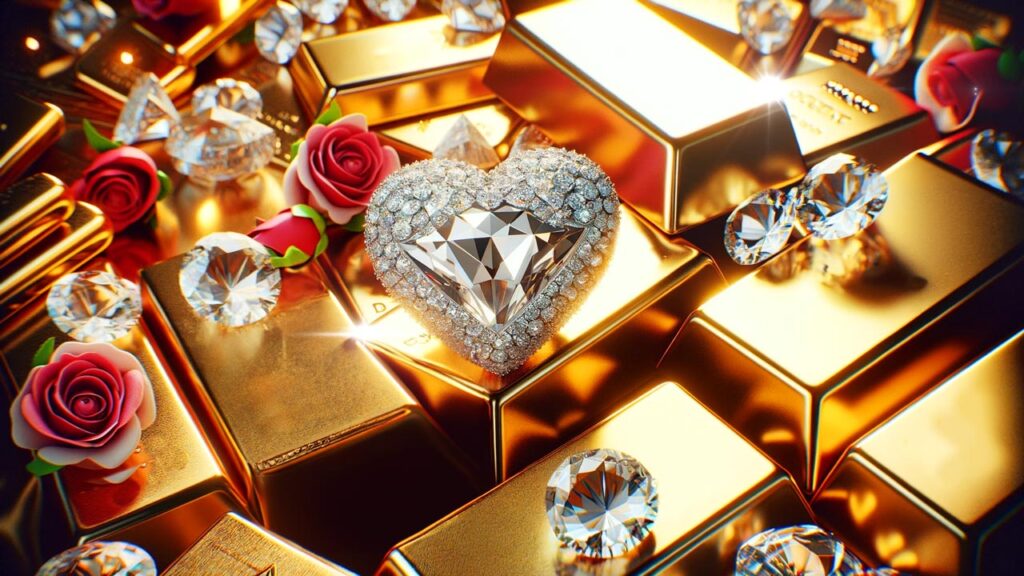by Peter Schiff, Schiff Gold:

Valentine’s Day is here and you might find yourself buying (or wishing you had remembered to buy) a Valentine’s Day present. A classic romantic present involves gold, diamonds, and sometimes both. And both diamonds and gold seem at first blush to have a lot in common.
Both are or at least can be beautiful. Diamonds are one of the shiniest gemstones (high refractive index if you’re science-minded) and can be perfectly clear or come in a wide range of colors. Gold is of course famously appealing to look at. Both diamonds and gold convey luxury and wealth, and both are regularly used to make luxury products such as rings, bracelets, watches, and earrings.
TRUTH LIVES on at https://sgtreport.tv/
The expense of both diamonds and gold is one reason why it’s so common for both diamonds and gold to be part of an engagement ring- the expense of these materials makes engagement rings expensive which helps them serve as a costly sign of commitment.
Some have argued that the similarities between diamonds and gold are even greater, given that some are turning to diamonds as a store of value and as an investment. But this overlooks why gold has historically been preferred as a store of value to diamonds, and how new technological developments have made the differences between diamond and gold even greater.
First, diamonds lack the history of gold. While gold has spontaneously emerged as a treasured metal and as a store of value or as a currency from civilization to civilization, the emergence of diamonds as a valuable commodity is much more recent and historically contingent. While diamonds were always recognized as gemstones, broad-based demand for diamonds did not emerge in the West until the 1800s and their famous role as the central stone in an engagement ring did not emerge until the mid 1900’s due to savvy marketing campaigns. So demand for gold is more stable and organic than the demand for diamonds. When central banks look to preserve the value of their currency, they often increase strategic gold reserves, not strategic diamond reserves.
While diamonds and gold might be seen as similar because both have industrial uses as well as usage in jewelry and investment, that overlooks the fact almost all gold is used for jewelry or as an investment while 80% of diamonds are used by industry. While every single ounce of gold could be used in industry, jewelry, or as an investment, because gold is fungible and divisible, the opposite is true for diamonds. Diamond value varies dramatically between individual stones. The value of a diamond depends on its size, its color, its clarity, and its cut. Many diamonds are worthless for any non-industrial purposes. While gold can be used as bullion converted to jewelry then melted back into bullion, cutting a diamond over and over would destroy its value. Demand for gold is driven by every sector. Demand for small industrial diamonds is not driven by demand for large diamonds that could feature in jewelry, and vice versa.



